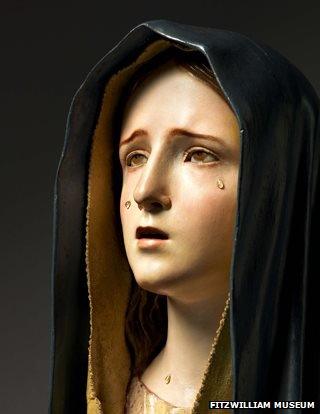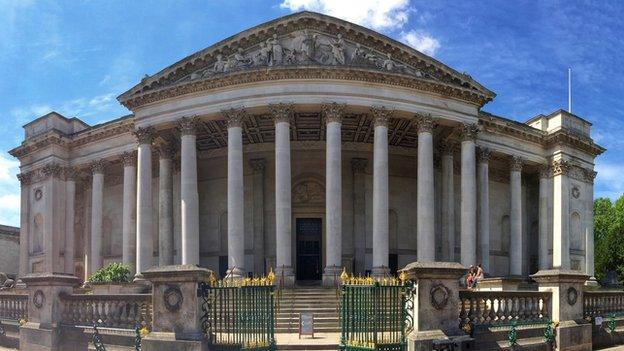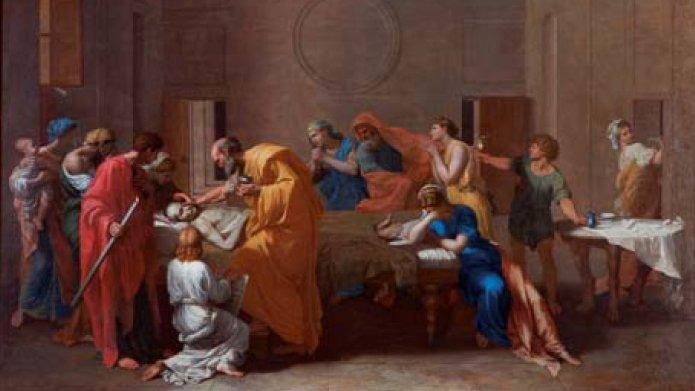Fitzwilliam Museum bids for weeping virgin sculpture
- Published

The Mater Dolorosa was created by artist Pedro de Mena circa 1670
A museum has revealed plans to acquire a 17th Century wooden bust of the weeping virgin, said to be one of the finest examples of its kind.
The sculpture of the Mater Dolorosa by Pedro de Mena has gone on display at the Fitzwilliam Museum, Cambridge, as part of an appeal to purchase it.
Museum director Tim Knox said the quality of Mena's carving and painting made it "highly desirable".
The museum must raise £85,000 by September to secure the acquisition.
'Fantastic addition'
Mr Knox said: "Much of Mena's work was destroyed during the Spanish Civil War and there is not a single autograph piece by Mena in a UK museum.
"The Mater Dolorosa [Virgin of Sorrows] would be a fantastic addition to our small but significant collection of... wood sculpture."
Most likely created for a private chapel, study or bedchamber, the 33.6cm (13.2in) statue, on loan to the Fitzwilliam from a private collection, features eyes made of glass and eyelashes created from human hair.
The Spanish sculptor Pedro de Mena, external (1628-1688) was taught the art of wood carving by his father Alonso, a well-regarded sculptor of traditional religious images in Granada.
- Published5 July 2014

- Published1 November 2012
